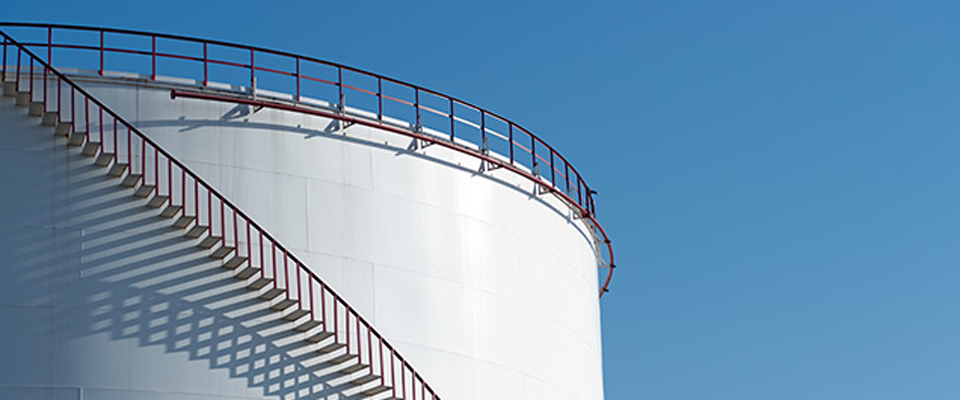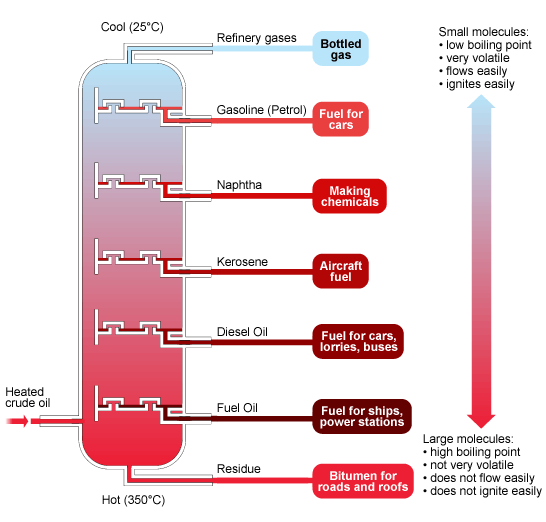Vancouver clean-tech and Dow Canada collaborate

A Vancouver clean-tech company has inked a deal with American chemical giant Dow Chemical Company (NYSE:DOW) to collaborate on a process for turning used plastics into fuel and chemicals.
Klean Industries Inc. announced Friday it has struck a deal with Dow to collaborate on a process for converting “end-of-life” plastics and tires, which would otherwise end up in landfills, into various types of fuel and chemicals.
Plastics are made from petroleum products and can generally only be recycled once. Many plastic bags are never recycled — they just end up in landfills.
One tonne of mixed plastic waste can yield 950 litres of oil, according to Klean Industies, which has developed a number of processes for converting waste products, as well as coal, into liquid fuel.
Klean Industries and Dow have extended a three-year letter of intent in which the two companies will collaborate and combine their respective proprietary processes for converting plastics into things like syngas and liquid fuel.
“After years of research in the technology market place and visiting many facilities around the globe, Klean’s technology is clearly a leader,” said Jeff Wooster, Dow’s global sustainability leader. “This is the only technology we have seen that has consistently operated for over a decade on a commercial scale.”
Jesse Klinkhamer, CEO of Klean Industries, said, “There is a global opportunity with the ever-increasing amounts of plastic waste, and we are pleased to provide a solution for dealing with it.”
By Business in Vacouver
Dow Chemical adding “Recover” to “Reduce, Reuse, Recycle”

Jeff Wooster, Dow’s global sustainability leader for plastics, is very aware of the impression some have about plastic packaging.
“We understand that some consumers view packaging as waste,” he told PlasticsToday. “We want to help consumers feel good about plastic packaging and have them know when they’re done with it, the packaging will be reused.”
Dow Chemical believes in order to achieve 100% recycling of packaging, the industry must progress from the 3R mindset, which is the widely practiced “Reduce, Reuse, Recycle,” to the more comprehensive efforts being used in regions such as Europe that add the fourth “R” for end-of-life materials—”Reduce, Reuse, Recycle and Recover.” Dow says using an integrated 4R approach will help assure greater total value recovery from end-of-life plastics and other used materials.
Energy recovery takes end-of-life plastics through a conversion process and uses the resulting energy value as a fuel. The combustion method of energy recovery is also known as thermal recycling, and is referred to as “recycle-to-energy” (RTE) within Dow. Many believe that energy recovery can create a valuable alternative energy source but at the same time reduce dependence on natural gas, oil and coal.
While the first option for the recovery of many plastics is mechanical recycling, Wooster said in order to increase the overall recovery of plastics there must be an integration of recycling with chemical transformation and energy recovery. Wooster said some throw up red flags when it comes to energy recovery because they believe it will divert material from being recycled.

“The key is understanding how energy recovery works as a system because mechanical recycling and energy recovery can work together,” he said. “We have the potential to recycle and recovery energy from a large amount of material.”
Mechanical recycling is primarily intended for larger volume treatment of mono-materials, such as PET and HDPE bottles, but Dow says there are limitations in terms of technology, logistics, costs and infrastructure. Energy recovery programs can capture value from consumer goods packaging along with non-recycled stretch and shrink film. Specifically, polyethylene, polypropylene, and polystyrene are said to have high material energy values.
“While it makes economic sense to recycle materials, there are a lot of packages that can’t be easily recycled,” Wooster said. “The best thing to do in that case is recover the energy.”
Dow has experience with energy recovery. In 2010, Dow conducted an energy recovery trial in North America that the company says successfully demonstrated that used plastic can generate energy. The pilot test, conducted at a rotary kiln in Dow’s Michigan operations, found that 96% of available energy was recovered after 578 lb of used linear low density polyethylene was thermally recycled. The energy recovered was equivalent to 11.1 million BTUs of natural gas and was used as fuel for Dow’s incinerator during the test.
In 2011, six additional energy recovery trials were conducted using non-recycled plastics (NRPs) from Dow Michigan operations to displace natural gas. These trials used 100 tons of NRPs and saved 2 billion BTUs of energy.
In addition, the American Chemistry Council and the Flexible Packaging Association are also actively working to validate the energy recovery prospects for plastics. Both organizations are investing in energy recovery trials.
Slow start, but growing interest
There are 2150 thermal waste treatment plants currently operational around the globe and those facilities have the capacity to treat almost 250 million tons of waste per year, according to a report by the German environmental consultancy, Ecoprog.
Between 2007 and 2011, the worldwide installed annual capacity increased by about 12%. This growth will increase in the next five years and Ecoprog estimates the annual capacities will increase by 21% by 2016. By then, operational capacities will amount to about 300 million annual tons.
About 250 new waste-to-energy plants will start operations by 2016. The group said that Europe continues to lead the market with Asia close behind.
Ecoprog said for the first time in several years, new waste-to-energy projects are currently being implemented in North America. It is uncertain, however, whether this will result in a stronger waste-to-energy market in North America for the long term, the group said. There are about 80 waste-to-energy facilities across the country.
While it’s been a slow start for North America, Wooster believes there is now growing interest in energy recovery.
“Energy prices have been high for a while now and are expected to be high; crude oil and electricity and diesel fuel have also been high for several years and people expect it to stay the same or go up in the future,” he said. “People are concerned about the liability of energy sources, which certainly increases interest in the science around energy recovery.”
Jesse Klinkhamer, CEO of Klean Industries, believes North America is behind the trend of waste-to-energy because for years resources were “plentiful” and society had freely adopted a throwaway mentality.
“When things are cheap, it’s business as usual. It’s not until someone gets a pinch and it starts to hurt, when they realize there might be a better way,” he said. “If there is a more efficient way to do things and you can profit and still be green, why not do it?”
Klean has been in commercial operation for more than 30 years and are able to process a wide variety of polymer waste such as plastics and tires and other post-industrial materials.
Klean’s advanced thermal conversion technology, which has been developed and used commercially in Japan, captures the value in oil rich plastic packaging.
Dow & Klean collaboration
Wooster, aware of Klean’s extensive background in energy recovery, visited the world’s largest plastics-to-oil recycling plant in Japan with Klean, whose company owns the technology IP.
After visiting the 50 tons/ day plant, Wooster said that this was the only technology they have seen that has consistently operated for more than a decade on a commercial scale. The facility Dow visited processed mixed plastics, including PET and PVC at up to 20% of the in-feed supply, in addition to polyethylene, polypropylene and polystyrene. At the same time, the facility also produced over 4MWe of green electricity.
The two companies have extended a three-year letter of intent, which allows them to combine proprietary technologies, knowledge and resources to provide “best in class” solutions for end-of-life mixed plastics. They plan to collaborate on the possibility of developing recovery facilities across North America.
Klinkhamer said it’s no easy endeavor to bring energy recovery facilities to the North America. Ultimately, it comes down to access to feedstock for these plants.
Still, he said Klean’s phone is ringing on a daily basis with potential customers who are interested in this alternative energy. Inquiries run the gamut from large companies to smaller “mom and pop” operations.
“There are existing technologies in the marketplace today that allows you to be a better corporate citizen, this is one of them,” he said.
In the end, Dow is working to make sure plastic packaging just doesn’t end up in the garbage and landfill.
“If we got rid of plastic packaging there would be terrible ramifications both for the economy and the safety of food supply,” Wooster said. “We want to help people understand the science and how good plastic packaging is to protect food supply, and we also believe that part of being a leader in the industry is to help find another use for packaging when it’s done, instead of just throwing it away.”
Klean Industries to recover energy, oil and chemicals from waste

Klean Industries Inc, a Canadian Energy Solutions Company announces its intent to collaborate with The Dow Chemical Company (“Dow”) to recover energy, chemicals and oil from end-of-life waste plastics that would otherwise be sent to landfill. This supports Dow’s drive to improve the sustainability profile of plastic packaging, it plans to collaborate with Klean on the possibility of developing low impact recovery facilities across North America.
The two companies have extended a three year letter of intent which allows them to combine proprietary technologies, knowledge and resources to provide “best in class” solutions for end-of-life mixed plastics. The recovery of waste plastics for their energy value provides an opportunity to reduce dependence on fossil fuels while recovering a valuable resource. Klean’s advanced thermal conversion technology, which has been developed and used commercially in Japan captures the inherent value in oil rich packaging plastics.
Jesse Klinkhamer, Chief Executive Officer of Klean Industries said “There is a global opportunity with the ever increasing amounts of plastic waste and we are pleased to provide a solution for dealing with it”. Dow recently visited the world’s largest plastics-to-oil recycling plant in Japan with Klean, whose company owns the technology IP. Jeff Wooster, Dow’s Global Sustainability Leader, Performance Plastics said “After years of research in the technology market place and visiting many facilities around the globe, Klean’s technology is clearly a leader.” Of the 50 tonne per day plant Wooster added “This is the only technology we have seen that has consistently operated for over a decade on a commercial scale.” Even more impressive is the fact that the facility Dow visited processed mixed plastics, including plastics such as PET and PVC at up to 20% of the in-feed supply in addition to the more predominant polyethylene, polypropylene, and polystyrene while at the same time the facility also produced over 4MWe of green electricity.
With millions of tonnes of end-of-life plastic currently being landfilled and the ability to recover approximately 950 litres of oil (depending on the plastics) from a tonne of mixed plastic waste, Klean believes there is potential for many such facilities around the globe. In addition to mechanical recycling there is a need for complementary methods to reclaim value from used packaging and there is a tangible market opportunity to increase the sustainability of end-of-life plastic packaging.
“With Klean’s expertise in plastic recycling technologies and their unique market understanding, we look forward to working with Klean on this exciting opportunity,” said Jeff Wooster.
Klean proprietary technologies have been in commercial operation for over 30 years and are able to process a wide variety of polymer waste such as plastics and tires and other post-industrial materials. Oil based waste streams such as end-of-life plastics are converted into high grade liquid fuels, syngas, electricity and nano-scale carbon black fillers that are compatible with customers’ existing end uses and product formulations, making these products simple to integrate into new or existing products throughout the supply chain. These products help companies achieve sustainability goals, while helping manage the high cost of non-renewable raw materials.
“Klean’s primary customer base includes energy utilities, waste management companies, manufacturing businesses and government bodies across North America and Europe who see Energy Recovery as an important part of the hierarchy of Integrated Resource Management. This effort is part of our broader technology approach at Klean, aimed at providing sustainable energy products and solutions without environmental compromise. Our collaboration with Dow is a critical step in realizing our goal of “100% Recycling and Recovery of End-of-Life Packaging”, said Jesse Klinkhamer.
About Klean
Klean is an environmentally conscious industrial energy company focused on providing renewable energy, resource-recovery and recycling solutions. Klean is a specialized international company using advanced proprietary technologies and know-how to develop projects that provide environmentally beneficial solutions to energy and waste-management challenges using unique low-carbon-footprint technologies and solutions. The company is headquartered in Vancouver, Canada and is committed to solving problems large and small in a commercially viable and environmentally responsible manner using proven technologies. Klean’s vertically-integrated approach turns wide variety of waste streams into domestic energy, sustainable green commodities and new jobs. For more information about Klean and our gasification and pyrolysis technologies or to receive project and general systems information please visit the “Plant Quotations” section of our website.
American Chemistry Council Conversion Technology: A Complement to Plastics Recycling

WASHINGTON, D.C. — Today the American Chemistry Council released a study conducted by 4R Sustainability, Inc. on increasing opportunities for plastics-to-fuel “conversion technologies” in the Unites States. Although in the United States plastics are made primarily from natural gas, these innovative technologies are effectively turning non-recycled plastics into crude oil and other fuels, helping to create a reliable source of alternative energy from an abundant, no-cost feedstock, and diverting this potentially valuable material from landfills. Many of these technologies are already being implemented on a commercial scale in Europe and Asia.
In 2009, the United States recycled over 4 billion pounds of plastics. This report demonstrates that we have an ability to recycle and recover more plastics through innovative technologies including those that allow us to convert plastics into oil and other fuels.
“As the United States seeks cost-effective sources of alternative energy, the potential to recover non-recycled plastics is enormous,” said Steve Russell, vice president of plastics for the American Chemistry Council. “According to scientists at Columbia University, if the United States were to recover the energy from our non-recycled plastics, this material could be converted into enough energy to fuel the equivalent of 6 million cars annually.”

The American Chemistry Council funded the study, “Conversion Technology: A Complement to Plastics Recycling“, to examine available technologies, feedstocks, growth models for technology abroad and in North America, opportunities and barriers, and outlook for growth in the United States. The information presented is intended to help inform government officials, plastics reclaimers, materials recovery facility managers, and investors about the range of available technologies and under what conditions each could fit in commercial or community waste management plans.
Consistent with the U.S. Environmental Protection Agency’s waste management hierarchy—reduce, reuse, recycle, recover—plastics-to-fuel technologies do not compete with recyclers for material. Rather, they tend to make use of non-recycled plastics—and in many cases run more efficiently with non-recycled plastics—which they convert into crude oil and other types of fuels.
Energy Recovery
Energy recovery is the process by which municipal solid waste is converted into feedstock materials or renewable energy. Energy recovery is happening right now, powering homes and businesses, and it’s helping to address our growing population’s biggest challenges: energy independence, waste diversion, and climate change.
Did you know…?
- The United States currently processes 13 percent of its solid waste, recovering enough energy to power homes in five states or the equivalent of 28.6 billion barrels of crude oil.
- Energy recovery facilities mean a lot less waste goes to landfills. Energy recovery facilities can reduce by 90 percent the volume of waste that goes to landfill.
- Modern energy recovery facilities are greener than ever, with fewer emissions. Today’s technology allows modern energy recovery facilities to process waste with fewer emissions than conventional fuels processed in most power plants. In fact, EPA estimates that energy recovery technology in use today helps prevent the release of 33 million metric tons of carbon dioxide annually.
- Plastics are high value “captured energy.” Plastics have significantly more captured energy than wood, paper or even coal.
- Plastics help energy recovery technology work better. Because plastics have a higher energy value than other components of municipal solid waste, they help to significantly increase the efficiency of the energy recovery process.
Used Plastics & Diesel Fuel

A new plant which turns mixed waste plastics into liquid synthetic fuels is now fully operational, with the promise of similar plants to come in the next year in North American and throughout Europe. This is the 7th of such designs installed and used by KleanFuels which can process over 50 tonnes of waste plastics per day, producing up to 38,000 litres of fuel products at a conversion rate of approximately 95%. The plant uses a technology involving low temperature pyrolysis and distillation to liquefy the plastics, ordinarily destined for landfill, into ultra-low sulfur hydrocarbon fuels which are less harmful to the environment than standard petroleum based diesel.
“Klean Fuels is targeting the diversion from landfill, working with mixed waste plastics from waste management companies, agricultural plastics collectors and commercial businesses. It’s a simple process, it’s not rocket science, we take in the mixed waste plastics, produce fuel and sell the fuel. Our plan now is to roll plants out in other places around the globe, rapidly as we enter into serial production mode. We are now aggressively building out projects for plant applications in the European and North American market places” according to Klean Fuels Team.
Currently, the fuel produced at various plants is sold in to large fuel distribution companies for blending or with minor modifications client specific fuel products can be produced. However, the plan for the future is to co-locate such plants alongside existing waste management facilities as part of a joint venture with commercial waste operators. Using this model we add tremendous value and by each integrated solution these plants would be able to use existing scrap plastic at these locations as feedstock with the fuel product produced being used as a primary energy source for machinery and vehicles with in the fence of the same facility, greatly reducing resource costs and CO2 emissions.
The KleanFuel Team is already in negotiations with several companies regarding our roll out plans and intends to get the next few plants up and running in North America and Europe before the end of the year. The current role out plan is nearly 100 facilities throughout Europe and North America using a serial production system over the next decade. With an aligned, aggressive joint venture strategy which would mean a landfill diversion of over 500,000 tonnes per annum and a production rate of over 500 million litres of synthetic fuels
.
Plastic to Oil Distillation

Fractional distillation differs from distillation only in that it separates a mixture into a number of different parts, called fractions. A tall column is fitted above the mixture, with several condensers coming off at different heights. The column is hot at the bottom and cool at the top. Substances with high boiling points condense at the bottom and substances with low boiling points condense at the top. Like distillation, fractional distillation works because the different substances in the mixture have different boiling points.
The diagram above summarizes the main fractions from crude oil and their uses, and the trends in properties. Note that the gases condense at the top of the column, the liquids in the middle and the solids stay at the bottom.
The main fractions include refinery gases, gasoline (petrol), naphtha, kerosene, diesel oil, fuel oil, and a residue that contains bitumen. These fractions are mainly used as fuels, although they do have other uses too.
Hydrocarbons with small molecules make better fuels than hydrocarbons with large molecules because they are volatile, flow easily and are easily ignited.

Pyrolytic Fractional Distillation Waste Polymers Scrap Plastics

